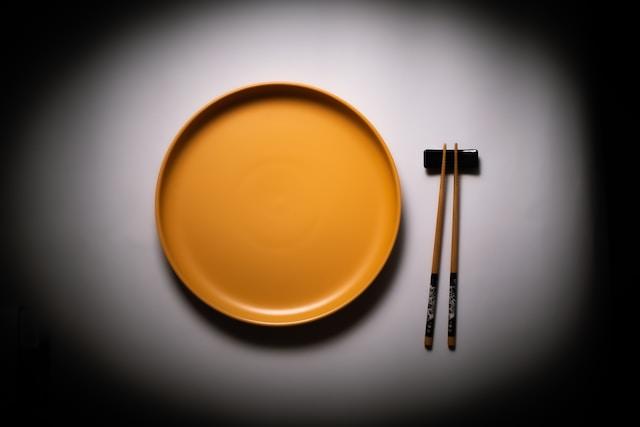Vietnam is a country with a rich and diverse culture, and its dining etiquette is no exception. From the way you sit at the table to the way you use your chopsticks, there are a few things you should know in order to eat like a local. So whether you are planning a trip to Vietnam or you are simply curious about Vietnamese culture, read on for our guide to Vietnamese dining etiquette
Nine Things You Need to Know about Vietnamese Dining Etiquette
1. Sit up straight and be mindful of your body language
In Vietnamese culture, it is considered rude to slouch or fidget while you are eating. This shows that you are not paying attention to the food or to the people you are eating with. Sit up straight and keep your shoulders back. This shows that you are respectful of your host and the food that they have prepared.
Here are some specific tips for good body language at the table:
- Keep your feet on the floor.
- Do not cross your arms or legs.
- Make eye contact with your host and the other guests.
- Smile and be friendly.
2. Use your chopsticks correctly

Chopsticks are an essential part of Vietnamese dining, and there are a few rules you need to follow in order to use them properly.
- Hold your chopsticks in the same way that you would hold a pen.
- The top chopstick should be stationary, while the bottom chopstick should be used to pick up food.
- Never point your chopsticks at someone, as this is considered rude.
- Do not use your chopsticks to pick up food from communal plates. Instead, use the edge of your plate to push the food onto your own chopsticks.
- Finally, never leave your chopsticks sticking upright in your rice. This is a symbol of death in Vietnamese culture.
Here are some additional tips for using chopsticks:
- If you are not comfortable using chopsticks, you can ask for a fork or spoon.
- If you drop your chopsticks, do not pick them up with your hand. Instead, use the edge of your plate to pick them up.
- If you need to use your hands to eat, be sure to wash them thoroughly first.
3. Offer food to others before you start eating
In Vietnamese culture, it is considered polite to offer food to others before you start eating. This shows that you are sharing the food with your guests and that you are not just thinking of yourself.
Here are some specific tips for offering food to others:
- Start by offering the food to the oldest person at the table.
- If there are guests of honour, offer them the food first.
- Once you have offered the food to everyone, you can start eating.
4. Take small bites and chew your food thoroughly
Vietnamese food is often served in small portions, so it is important to take small bites and chew your food thoroughly. This shows that you are enjoying the food and that you are not just rushing through your meal.
Here are some specific tips for eating slowly and carefully:
- Put your fork or spoon down between bites.
- Do not talk with your mouth full.
- If you are not sure how to eat a particular dish, ask your host for help.
5. Don’t slurp your soup
Slurping soup is considered rude in Vietnamese culture. It is believed that slurping shows that you are hungry and that you are not enjoying the food. Instead, sip your soup slowly and quietly.
Here are some specific tips for eating soup politely:
- Use a spoon to eat your soup.
- Do not blow on your soup to cool it down.
- If you have to slurp your soup, do it quietly.
6. Don’t talk with your mouth full
This is a common rule of etiquette in many cultures, but it is especially important in Vietnam. Talking with your mouth full is considered rude and disrespectful.
Here are some specific tips for avoiding talking with your mouth full:
- Take small bites.
- Chew your food thoroughly.
- Put your fork or spoon down when you are talking.
7. Don’t leave any food on your plate
In Vietnamese culture, it is considered rude to leave any food on your plate. This shows that you are not enjoying the food or that you are not grateful for your host’s hospitality. If you are full, you can ask your host to pack up the leftovers for you to take home.
Here are some specific tips for avoiding leaving food on your plate:
- Only take what you know you can eat.
- If you are not sure how much food to take, ask your host for advice.
- If you are full, ask your host to pack up the leftovers for you to take home.
8. Be mindful of your table manners
In addition to the specific rules listed above, there are a few other general table manners that you should keep in mind when dining in Vietnam. For example, it is considered rude to reach across the table for food, and you should always use a clean fork
9. Enjoy the food and the company!
Most importantly, remember to relax and enjoy the food and the company. Vietnamese people are very hospitable, and they will be happy to see you enjoying their food. So sit back, relax, and let the good times roll!
Here are some additional tips for dining in Vietnam:
- If you are invited to a Vietnamese home for dinner, it is customary to bring a small gift, such as flowers, fruit, or a bottle of wine.
- It is considered polite to compliment the food, even if you are not a big fan of it.
- If you are offered tea or coffee, it is customary to accept.
- It is considered polite to leave a small tip at the end of your meal.
I hope this guide has helped you learn a little bit more about Vietnamese dining etiquette. Now that you know the rules, you can enjoy your next meal in Vietnam like a local!
Want to practice the tips you’ve learnt? Check out our guide to the best restaurants in Hanoi and Ho Chi Minh City!

